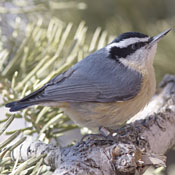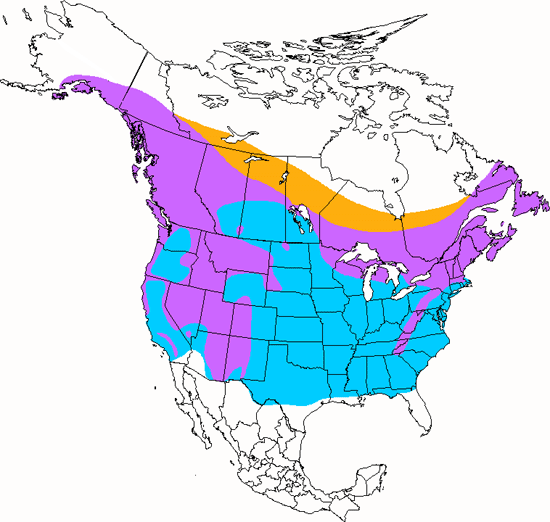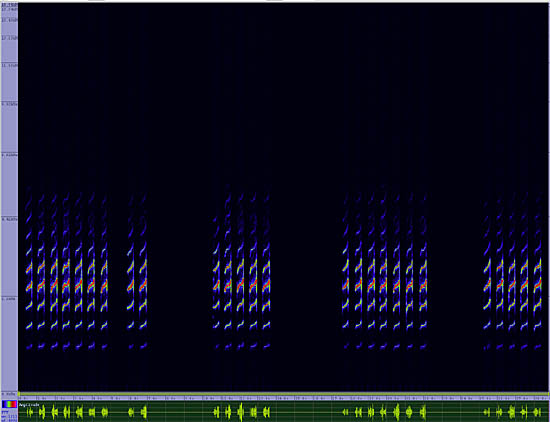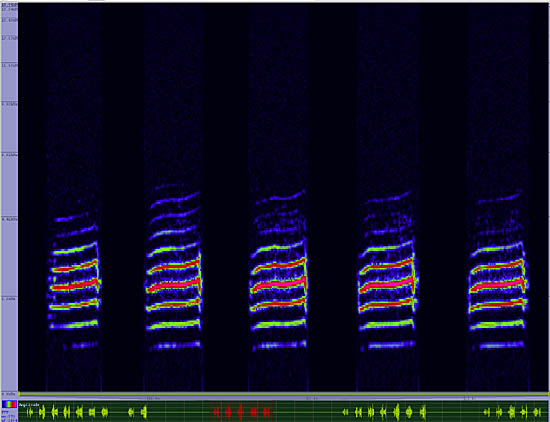Red-breasted Nuthatch
Sitta canadensis

Tree Clinging
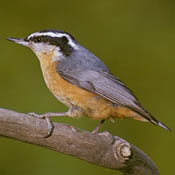
Length: 5 in. (11 cm )
Distinctive in its ability to walk down tree trunks head first, the small Red-breasted Nuthatch is readily identified. It occurs in mature coniferous forest and high altitude aspens where it feeds on insects from the bark and, during the winter, on pine cone seeds. Its nest is in a cavity dug out of a rotting branch or stump.
The four-digit banding code is RBNU.
Bibliographic details:
- Article: Red-breasted Nuthatch
- Author(s): Dr. Biology
- Publisher: Arizona State University School of Life Sciences Ask A Biologist
- Site name: ASU - Ask A Biologist
- Date published: 13 Jul, 2017
- Date accessed: 23 September, 2025
- Link: https://askabiologist.asu.edu/activities/bird/red-breasted-nuthatch
APA Style
Dr. Biology. (Thu, 07/13/2017 - 15:37). Red-breasted Nuthatch. ASU - Ask A Biologist. Retrieved from https://askabiologist.asu.edu/activities/bird/red-breasted-nuthatch
Chicago Manual of Style
Dr. Biology. "Red-breasted Nuthatch". ASU - Ask A Biologist. 13 Jul 2017. https://askabiologist.asu.edu/activities/bird/red-breasted-nuthatch
MLA 2017 Style
Dr. Biology. "Red-breasted Nuthatch". ASU - Ask A Biologist. 13 Jul 2017. ASU - Ask A Biologist, Web. https://askabiologist.asu.edu/activities/bird/red-breasted-nuthatch
Be Part of
Ask A Biologist
By volunteering, or simply sending us feedback on the site. Scientists, teachers, writers, illustrators, and translators are all important to the program. If you are interested in helping with the website we have a Volunteers page to get the process started.



